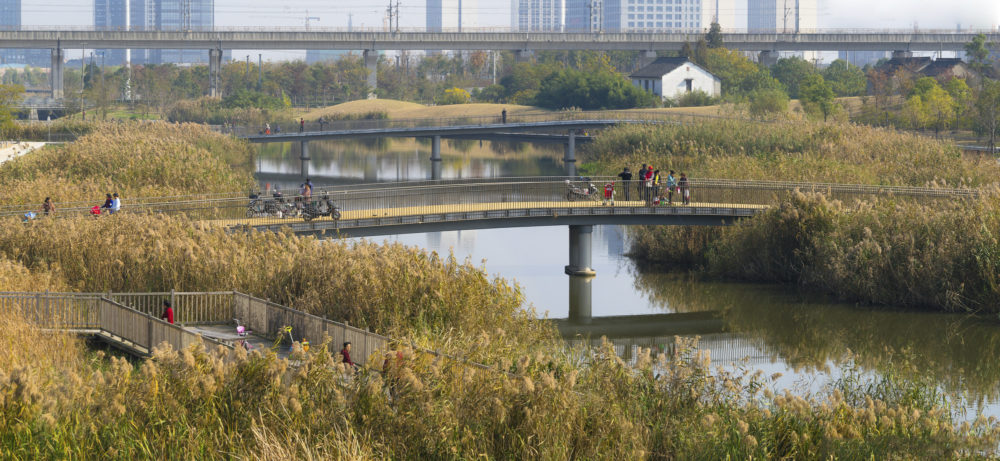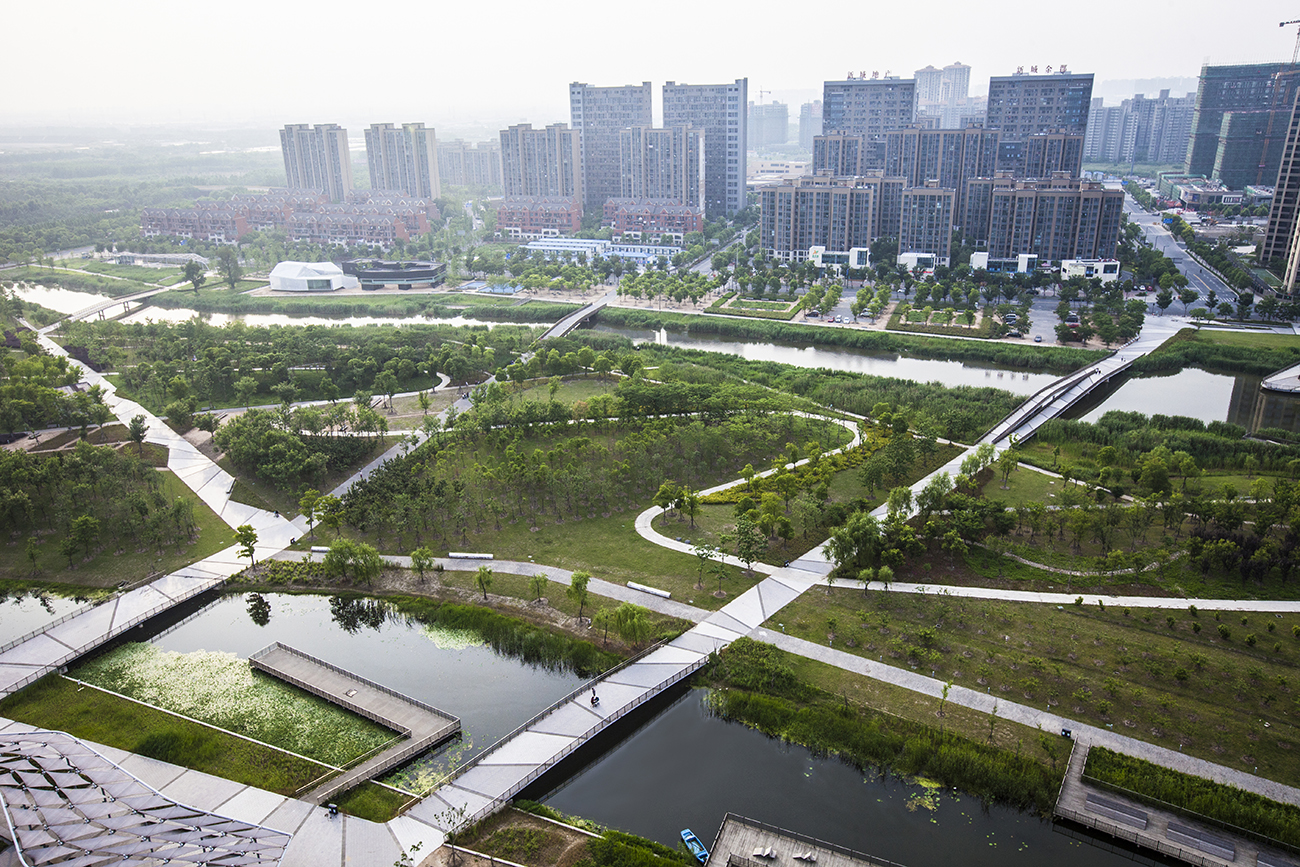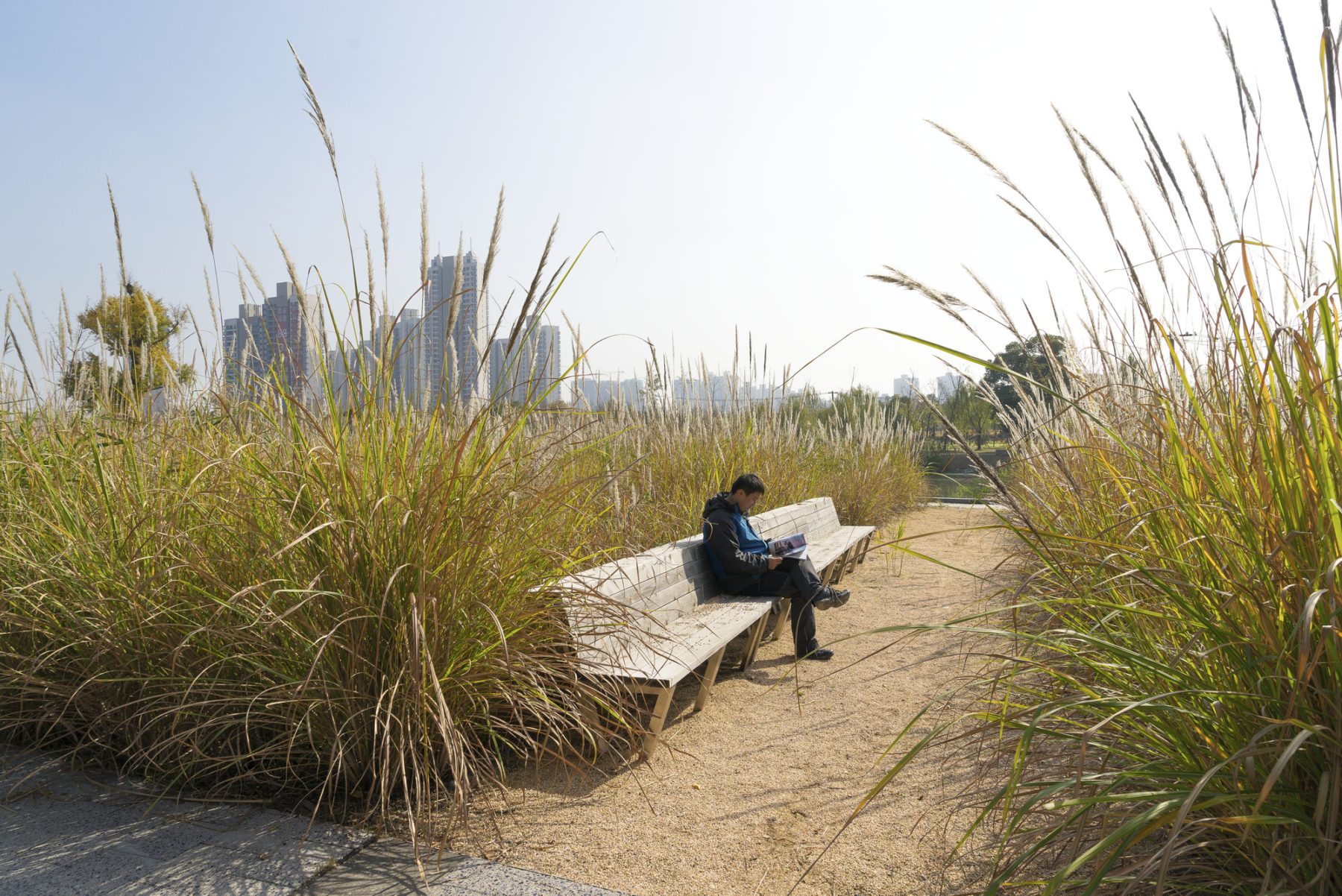
Jiading Central Park
Shanghai, China
 Sasaki
Sasaki

Jiading Central Park is a 70-hectare urban park in Shanghai, designed by Sasaki to stitch together originally fragmented open spaces, degraded canals, and their surrounding urban fabric in the rapidly growing Jiading district.
Ecological improvement was set as one of the primary goals since the launch of design in 2008. Upon the park’s opening in 2013, 100% native tree species planted on carefully graded terrains, constructed wetlands, and naturalized water edges nurtured diverse habitat and intimate outdoor spaces.
After the park opened to the public, Sasaki collaborated with the Regional Ecological Lab at East China Normal University in Shanghai to conduct a year-long Post-Occupancy Evaluation (POE) to document its performance. With the goal of gathering detailed environmental metrics, a rigorous process of field sampling and lab analysis investigated a wide array of environmental indexes for water, air, microclimate, and biomass. The research findings offered valuable scientific evidence to evaluate the project’s ecological aspirations and to validate multiple design hypotheses.

High grasses and strategically placed nooks create opportunities for solitude-seekers to enjoy the park, and find escape from the hustle and bustle of the city just outside the perimeter

The park’s plazas offer a residents a place to gather and play. The park includes the new Jiading Library, an amphitheater, cafe, and artists’ studios—amenities that celebrate the city’s culture and provide activities and entertainment to its citizens.
For instance, the research shows the design successfully removed up to 97% of Phosphorus and up to 66% of Nitrogen, the two dominant urban pollutants in the park’s water bodies. Working with the scientific community to better understand how our design has affected the site’s ecology revealed that some of the most important benefits of landscape architecture are often intangible to the public.